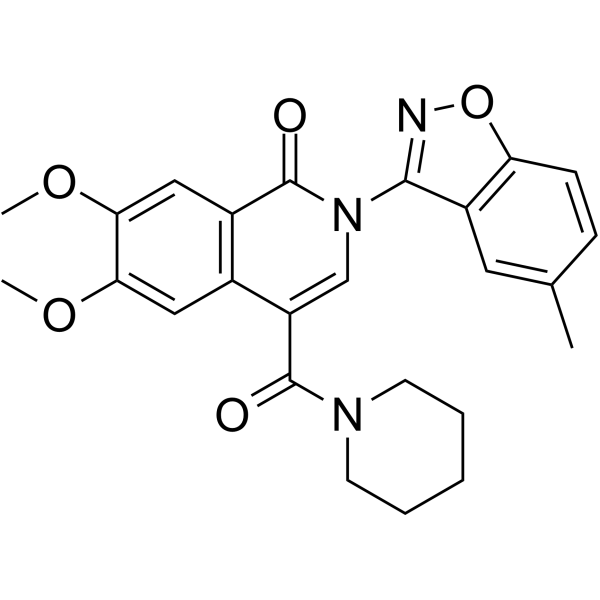
AS2717638
CAS No. 2148339-28-8
AS2717638( —— )
Catalog No. M26061 CAS No. 2148339-28-8
AS2717638 is an orally active and selective lysophosphatidic acid receptor 5 (LPA5) antagonist (IC50: 38 nM for hLPA5).
Purity : >98% (HPLC)
 COA
COA
 Datasheet
Datasheet
 HNMR
HNMR
 HPLC
HPLC
 MSDS
MSDS
 Handing Instructions
Handing Instructions
| Size | Price / USD | Stock | Quantity |
| 5MG | 290 | Get Quote |


|
| 10MG | 484 | Get Quote |


|
| 25MG | 782 | Get Quote |


|
| 50MG | 1062 | Get Quote |


|
| 100MG | 1431 | Get Quote |


|
| 200MG | Get Quote | Get Quote |


|
| 500MG | Get Quote | Get Quote |


|
| 1G | Get Quote | Get Quote |


|
Biological Information
-
Product NameAS2717638
-
NoteResearch use only, not for human use.
-
Brief DescriptionAS2717638 is an orally active and selective lysophosphatidic acid receptor 5 (LPA5) antagonist (IC50: 38 nM for hLPA5).
-
DescriptionAS2717638 is an orally active and selective lysophosphatidic acid receptor 5 (LPA5) antagonist (IC50: 38 nM for hLPA5). It also significantly improves PGF2α-, PGE2-, and AMPA-induced allodynia.
-
In Vitro——
-
In Vivo——
-
Synonyms——
-
PathwayOthers
-
TargetOther Targets
-
Recptor——
-
Research Area——
-
Indication——
Chemical Information
-
CAS Number2148339-28-8
-
Formula Weight447.491
-
Molecular FormulaC25H25N3O5
-
Purity>98% (HPLC)
-
SolubilityIn Vitro:?DMSO : 60 mg/mL (134.08 mM)
-
SMILESCOc1cc2c(cn(-c3noc4ccc(C)cc34)c(=O)c2cc1OC)C(=O)N1CCCCC1
-
Chemical Name——
Shipping & Storage Information
-
Storage(-20℃)
-
ShippingWith Ice Pack
-
Stability≥ 2 years
Reference
molnova catalog



related products
-
Kelampayoside A
Kelampayoside A is a natural product from Callicarpa peii.
-
Vatalanib hydrochlor...
Vatalanib hydrochloride (PTK787; ZK-222584; CGP-797870) functions as an inhibitor of VEGFR2/KDR, displaying an IC50 value of 37 nM .
-
Protodioscin
Protodioscin is a major steroidal saponin in dioscoreae rhizome, with anti-hyperlipidemia, anti-cancer properties.



 Cart
Cart
 sales@molnova.com
sales@molnova.com


